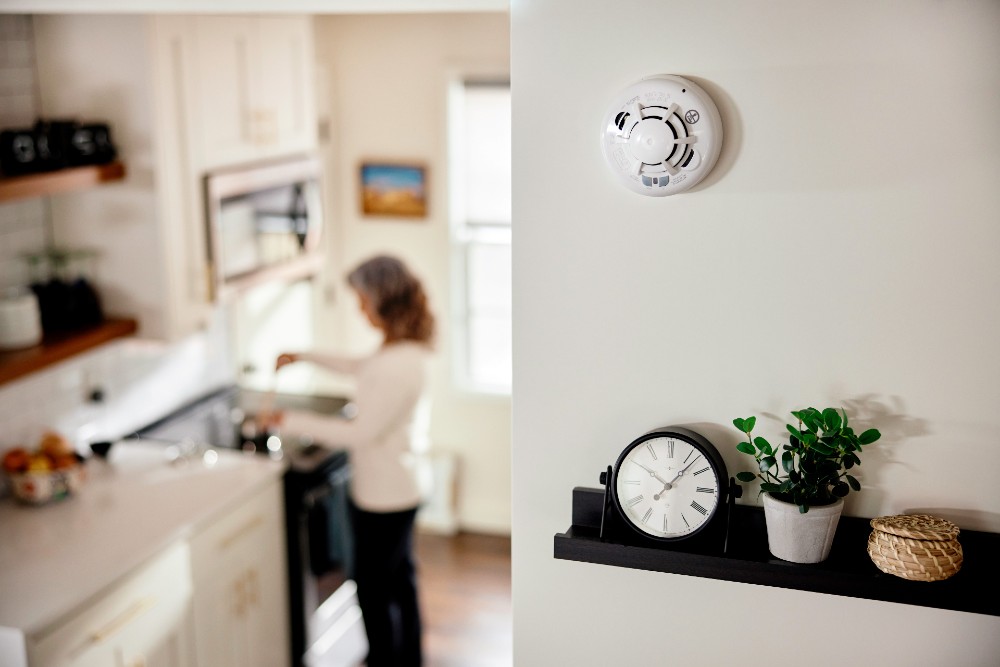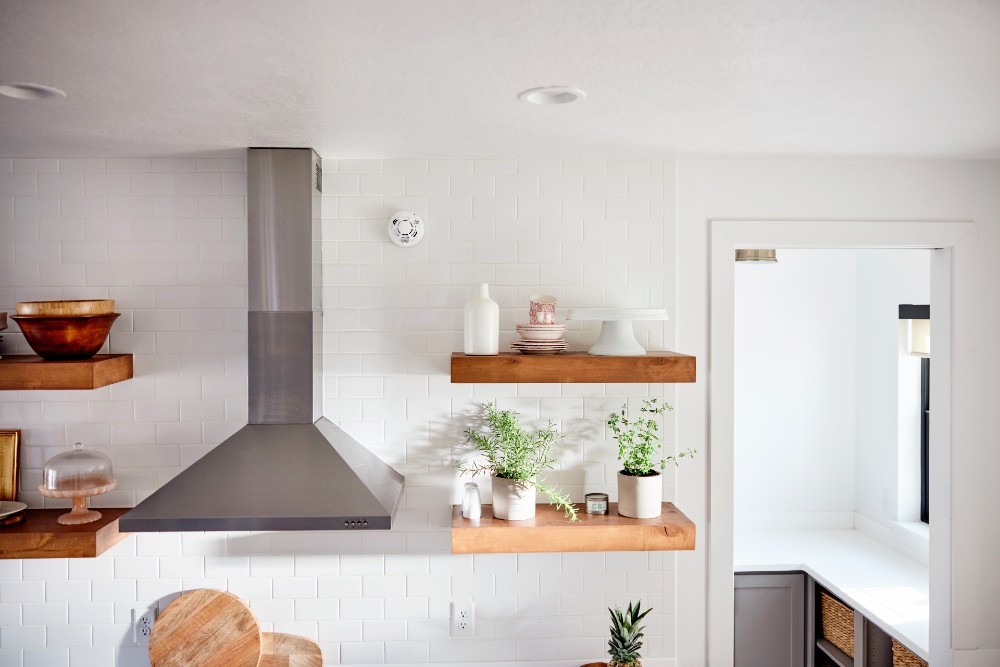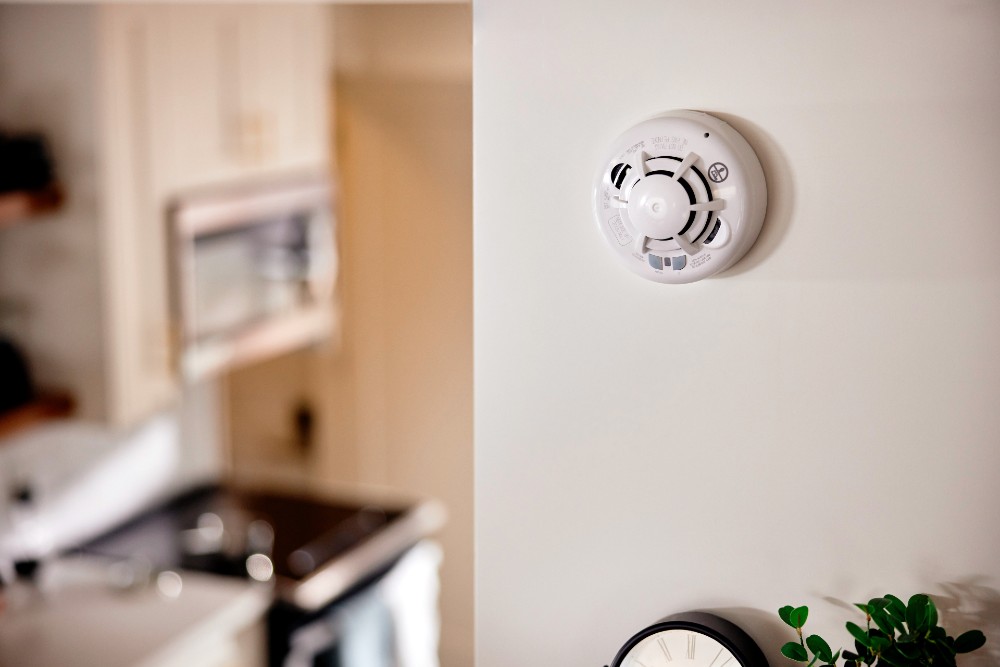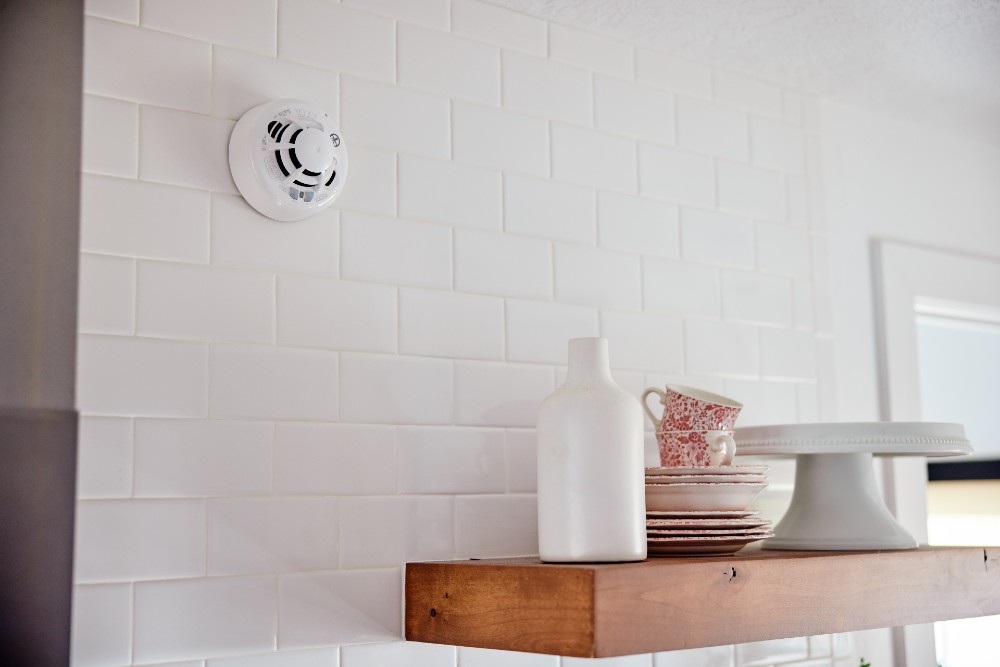Take in these charming toy versions of America’s top architectural styles, and learn how to enhance your home’s safety without compromising on style.
Home Fire Safety Tips: A Comprehensive Guide
The idea of a fire breaking out in our homes is a terrifying thought. The National Fire Protection Association (NFPA) reports that fire departments respond to over 350,000 home fires annually, resulting in thousands of fire deaths, injuries, and billions in property damage. This alarming figure underscores the importance of home fire safety.
In this guide, we’ll explore how a fire starts, fire prevention tips, how to create a fire escape plan, and the role of smoke alarms and fire extinguishers. Our goal is to help homeowners better protect their homes and loved ones from fires.

How house fires start
Understanding how fires start is the first step in fire prevention. Leading causes of home fires include:
-
Cooking fires. These are often ignited by overheated oils or unattended stovetop cooking.
-
Electrical malfunctions. These result from faulty wiring, overloading circuits, or misuse of extension cords.
-
Heating equipment. Uncleaned chimneys and Items such as space heaters and portable heaters placed too close to flammable materials can cause fires.
The science of fire starts at the combustion process where heat, fuel, and an oxidizing agent (typically oxygen) interact. When flammable or combustible materials come into contact with a heat source, a fire can ignite, especially when there’s a lot of oxygen.
How to react to a home fire
Facing a home fire requires a blend of preparedness and clear-headed actions.
Initially, the most important thing is to stay calm. This allows you to make quick, smart decisions, which are crucial.
After realizing there’s a fire, you should alert everyone in the house to make sure they’re aware of the situation.
Now, moving on to the crucial step of evacuation: Have a preplanned escape route. Follow this route to safely exit the house. If you encounter smoke while evacuating, remember to stay low to the ground, as this is where the air is clearest.
If your clothes catch fire, remember to “stop, drop, and roll.” Stop in your tracks, drop to the ground, and roll over back and forth until the flames are extinguished.
If a door needs to be opened, test the door for heat using the back of your hand before opening it. A warm door indicates fire on the other side, so you may have to find an alternative exit. If you’re trapped in a room, seal the gaps around the door with cloth to keep smoke out and signal for help from a window.
Assist others during evacuation, including children, the elderly, and individuals with disabilities or who are hard of hearing. This ensures no one is left behind. A simple act like providing a cloth to cover their faces can help reduce smoke inhalation, making the evacuation smoother.
Finally, stay low to avoid the denser smoke that rises, cover your nose and mouth with a cloth, and use flashlights to improve visibility if there’s a lot of smoke.

6 tips for preventing home fires
Here are some tips to make sure your home remains safe from potential fire hazards.
Safely use electrical appliances
Avoid overloading outlets, as it can cause overheating and spark a fire. Always adhere to the manufacturer’s instructions when using appliances, and never bypass safety features.
Regular maintenance checks by a professional electrician can help identify and fix potential hazards like faulty wiring or malfunctioning appliances.
Practice safe cooking
The kitchen is one of the common places where home fires start. Always stay in the kitchen while cooking, especially when using high temperatures. Keep flammable items like paper towels, wooden utensils, and dishcloths away from the stove.
Additionally, make sure your cooking equipment is in good working order and free from grease buildup, which can ignite a fire.
Adhere to smoking safety
If you or someone in the household smokes, use deep ashtrays to prevent ashes from falling onto flammable surfaces, and make sure to properly extinguish cigarette butts before disposing of them.
Most importantly, never smoke in bed, as falling asleep with a lit cigarette can ignite bed linens and mattresses.
Exercise caution with candles and open flames
Candles and other open flames can create a serene atmosphere, but they demand attention. Never leave them unattended, and always keep them away from flammable materials like curtains or papers. Use sturdy candle holders that won’t tip over easily.
Maintain heating equipment
Heating equipment like space heaters and fireplaces need regular maintenance to operate safely. Ensure a safe distance between heaters and flammable materials, and have your fireplace cleaned and inspected regularly to prevent chimney fires. Make sure to follow the manufacturer’s guidelines for operation and maintenance.
Adopt fire-safe landscaping and exterior precautions
Your outdoor space also demands attention in fire prevention. Adopting fire-safe landscaping practices, such as creating defensible space around your home and using fire-resistant plants, can reduce fire risks.
When grilling, do it safely away from structures and overhanging branches. Store flammable liquids in approved containers, and keep them away from the house to prevent fire spread.
Fire safety for different areas of the home
Every nook and cranny of your home has its own needs, and when it comes to fire safety, a one-size-fits-all approach just won’t cut it. Let’s explore how to tailor your fire safety measures to each unique space.
Kitchen
The kitchen, a haven for delicious creations, is also a hot spot for potential fires. Here’s how to keep it safe:
-
Never leave cooking unattended. It’s tempting to step away while the stew simmers, but fires love a lonely kitchen. Stay put and keep an eye on the heat.
-
Keep flammables away. Oven mitts, wooden utensils, and food packaging should stay a safe distance from the stove.
-
Cool it with the oil. Avoid heating oil to smoking point; it’s a fire hazard. And if a grease fire happens, water is not your friend—use a metal lid or baking soda to snuff it out.
Bedroom
The bedroom, a place where we unwind and rest, should also be a place where safety is ensured. Here’s how to make it happen:
-
Check electricals. Ensure all electrical appliances like heaters and chargers are turned off before hitting the hay.
-
Install smoke alarms. Install a smoke alarm in or near bedrooms to catch any danger early.
-
Keep escape routes clear. Make sure that windows are easily operable and not blocked by furniture, so they can be used as an escape route in case of a fire.
Living room
Your living room is a space of relaxation, so let’s keep fire worries away:
-
Practice fireplace safety. If you have a fireplace, use a screen to catch sparks, and keep the hearth area clear of anything that can burn.
-
Inspect electrical cords. Keep an eye on electrical cords for wear and tear, and avoid overloading sockets.
-
Position candles carefully. Enjoy candles? Make sure they’re placed in sturdy holders and away from curtains, books, and other flammable items. Always extinguish them before leaving the room or going to bed.
Garage
The garage often doubles as a storage space, making it a potential hot spot for fire hazards. Let’s address these risks head-on with the following tips:
-
Store flammables safely. Keep gasoline, paints, and other flammable liquids in properly sealed containers away from heat sources.
-
Maintain a clutter-free zone. Keep the area around your furnace and hot water heater clear to prevent ignition.
-
Install smoke alarms. A smoke alarm in the garage can alert you early to any fires, giving you more time to respond. Test it regularly to keep it functioning properly.
Basement
The basement can harbor fire risks that go unnoticed until it’s too late. Let’s shine a light on these hazards and address them proactively with the following tips:
-
Maintain your furnace. Have your heating system serviced annually by a professional.
-
Install smoke alarms and CO detectors. Equip the basement with smoke alarms and carbon monoxide detectors to catch both fire and gas dangers.
-
Clear the area. Make sure the areas around the furnace, water heater, and other appliances are free of stored items and clutter that could catch fire.
Tackling fire safety room by room allows you to address the unique challenges each area presents. With a blend of common sense and proactive measures, you can make sure your home remains a safe haven from the basement to the bedroom and every room in between.

How to create a home fire escape plan
Having a solid fire escape plan offers peace of mind, knowing that your family is prepared in case of an emergency. Let’s walk through how to create a fire escape plan that's easy to understand and practice.
-
Draw escape routes. Kick-start the process by drawing a simple floor plan of your home. Sketch in two exits from each room, like a door and a window, ensuring there are alternatives if one way is blocked. Trace the paths from each exit to the outside, making it clear how to get out from anywhere in the house.
-
Select meeting points. Pick a safe spot outside where everyone will meet after evacuating. It could be a neighbor’s driveway, a nearby tree, or a street corner—just make sure it’s far enough from the house but still easily accessible.
-
Practice the plan. Now, bring the plan to life by practicing it. Aiming for at least two drills a year can help keep the plan fresh in everyone’s minds. Switch up the scenarios each time—like pretending the front door is blocked—to make sure everyone is prepared for different situations.
-
Conduct fire drills. Fire drills are your chance to iron out the kinks in the plan. They help everyone get used to the sound of smoke alarms and understand the routes to take.
-
Educate on emergency calls. Make sure everyone knows how to dial the emergency number and explain the situation calmly. It’s crucial information that even young children should be aware of.
-
Equip higher floors. If you’re in a multilevel home, having escape ladders on higher floors is a smart move. Make sure everyone knows where they are and how to use them.
-
Assign helpers. If someone in the house may need assistance, assign a helper to guide them during the evacuation.
Crafting and practicing a fire escape plan with a touch of professionalism and a dash of family cooperation can lead to a recipe for safety. It’s all about being prepared and making sure everyone knows the drill.
In the face of an emergency, these steps could make all the difference in keeping your loved ones safe and sound.
Importance of smoke alarms and fire extinguishers
Smoke alarms and fire extinguishers are important tools in your fire safety arsonal. Let’s delve into why these gadgets are your home’s unsung heroes and how to ensure they're always ready.
Smoke alarms
Smoke alarms are your first line of defense, offering a heads-up before the fire turns menacing. They come in different types:
-
Ionization alarms. Quick to respond to flaming fires.
-
Photoelectric alarms. Better at detecting smoldering fires.
-
Dual-sensor alarms. A blend of both tools that responds to flaming and smoldering fires.
Installing them is easy but requires strategic thinking. Place them in hallways, near bedrooms, and in high-risk areas like the kitchen and garage.
Maintenance is pretty straightforward. Gently vacuum to remove dust, and test monthly by hitting the “test” button. Replacing the batteries annually or opting for alarms with 10-year batteries keeps them in tip-top shape.
Fire extinguishers
If a small fire flares up, a fire extinguisher is your go-to firefighting companion. Here’s a brief on the different types:
-
Class A extinguishers. For basic paper or wood fires.
-
Class B extinguishers. Ideal for flammable liquid fires.
-
Class C extinguishers. Designed for electrical fires.
-
Multiclass extinguishers. Cover a mix of different fire types, like A-B-C extinguishers.
The key is to have them handy in the kitchen, garage, and near exit doors. But having a fire extinguisher isn’t enough; knowing how to use it is just as crucial. A simple training session can empower you with the basics. Remember the pull, aim, squeeze, and sweep (PASS) technique.
Do a regular inspection to make sure the extinguisher isn’t expired and the pin and tamper seal are intact, so it’s ready for action when needed.
Pairing working smoke alarms with fire extinguishers and a dash of knowledge makes a robust defense against home fires. With these buddies by your side, you’re taking a giant leap toward a safer home, ensuring you’re not just reacting to danger but actively keeping it at arm’s length.

Fire safety FAQ
We answer some commonly asked questions about fire safety.
How often should I test my smoke alarms and fire extinguishers?
It's advisable to test smoke alarms monthly by pressing the test button and ensuring they are operational. Fire extinguishers should be checked monthly for any signs of damage and should be maintained as per the manufacturer's instructions.
What should be the focus in fire safety for different sleeping areas?
In sleeping areas, ensure working smoke alarms are installed and there are clear escape routes. It's also advisable to have a fire escape plan that all family members are familiar with to ensure a swift evacuation in case of a fire during sleeping hours.
How do carbon monoxide alarms contribute to fire safety?
Carbon monoxide (CO) alarms detect the presence of CO, a deadly gas produced when fuels burn incompletely. While they don’t detect fire, they provide crucial protection against one of the hazards associated with fires.
How do I establish a safe meeting place during a fire evacuation?
Choose a meeting place that’s a safe distance away from your home, like a neighbor’s house, a street light, or a mailbox. Make sure every family member knows the location and the importance of gathering there during a fire evacuation to account for everyone.
Protect your home against fires with Vivint
We’ve covered the basics of home fire safety, how fires start, how to react, and how to prevent them. Yet, there’s more you can do to ensure the safety of your home and loved ones. Incorporating a robust fire safety system is a smart move toward enhanced preparedness.
Vivint offers a range of fire safety solutions that integrate seamlessly into your home. With Vivint’s safety alarms, you’re investing in a smart system designed to alert you the moment danger is detected, whether you’re home or away.
Take the next step in fortifying your home against fires. Explore Vivint safety alarms and discover how you can bring peace of mind into your home, knowing that you’re well-protected from the threat of fires.
Your family’s safety is a priority—make it a certainty with Vivint. Call us at 855.822.1220 for a free consultation today.
Get a free quote today.
A Vivint Smart Home Pro will contact you within 24 hours. Or skip the form and call now: 844.481.8630.


